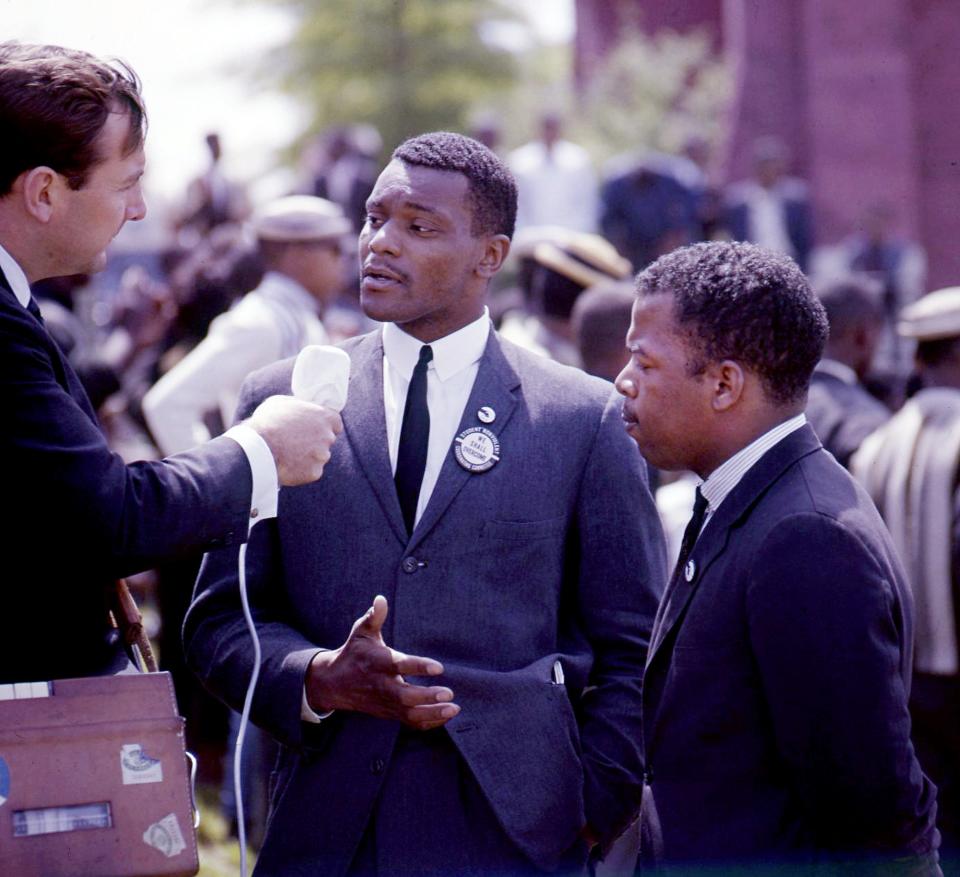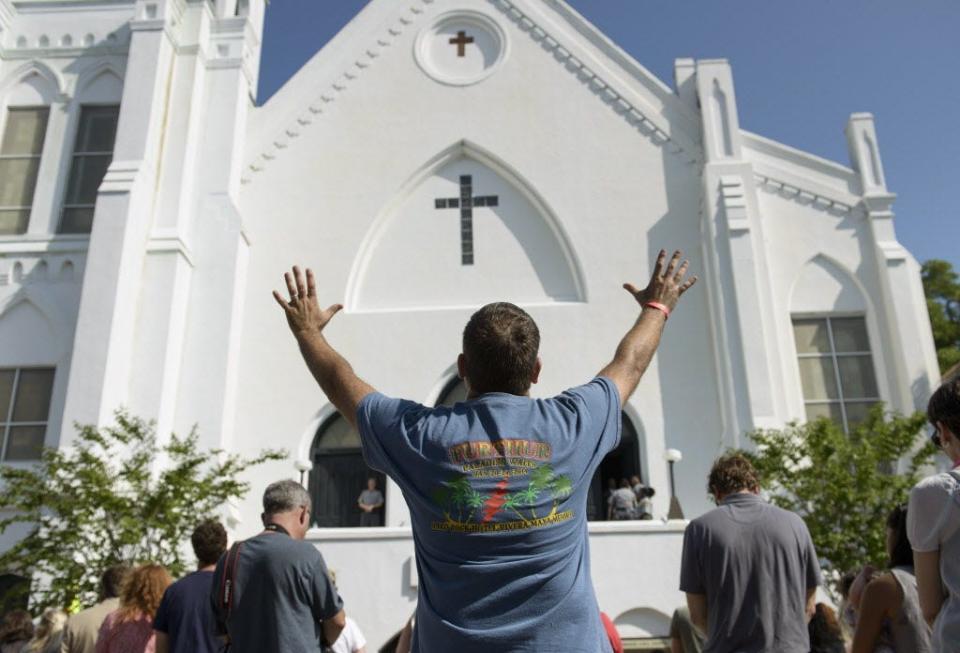Black churches, home for prayer and politics alike, get major preservation funds
Some were designed by African American architects. A handful were founded by emancipated former slaves, another by a veteran of the Union Army's U.S. Colored Troops in Mississippi.
Their styles range from Romanesque Revival and Neoclassical Revival to contextual modernism. One is a rare, wood-framed antebellum structure, its exterior marked by a modest cornice and a simple Doric-columned portico.
Many of these historic Black churches were at the forefront of American social and civic movements, hosting political rallies and meetings during the Civil Rights era and community socials in the years of Jim Crow. Before that, some served as sanctuaries on the Underground Railroad for those escaping enslavement.
All are among 31 projects recently awarded a collective $4 million in preservation funding through the National Trust for Historic Preservation’s African American Cultural Heritage Action Fund.
“Black churches played a significant role in American history, impacting our social, cultural, political and spiritual lives,” said Brent Leggs, the fund’s executive director. “They stand as living testaments to the achievements and resiliency of generations, and their stories matter.”
The grants, ranging from $50,000 to $200,000, mark the second round of funding offered through the fund, which is dedicated to preserving historic African American sites around the country. Through its Preserving Black Churches program, an initiative funded by the Lilly Endowment, it has now awarded $9.8 million in grants to 80 churches nationwide.
“Black churches have been at the forefront of meaningful democratic reform since this nation’s founding,” historian Henry Louis Gates Jr., an adviser to the fund, said in a press release. “They’re a living testament to the resilience of our ancestors in the face of unimaginably daunting challenges.”
The program provides historic Black churches and their congregations or overseers resources and technical expertise to deal with deferred maintenance, water filtration, mold contamination and threats of demolition. Some churches, Leggs said, face threats beyond the structural, with diminished or vanished congregations that have left them vacant and abandoned.
“They don’t have the funding to share their story,” he said.
Grantees showcase diversity of geography, style and history
The grantees, Leggs said, are nationwide, from Thomasville, Georgia, to Los Angeles. Among the more notable recipients, he said, is Union Bethel AME Church in Great Falls, Montana, which began holding regular services in 1890.
“That speaks to the outmigration of African Americans during Jim Crow to establish communities even in rural parts of our nation,” Leggs said. “Many Americans would not realize there is Black history there.”
The funds will support repair of the church’s brick facade and address weather-related deterioration.

Other recently announced grantees include:
St. James AME Church in New Orleans, the city’s oldest Black Protestant Church, which served both as a headquarters for Black Union soldiers during the Civil War and a staging site for marches during the Civil Rights Movement. The funding will allow the church to restore its historic facade and to make repairs to prevent water intrusion in its upper sanctuary balcony.
Town Clock Church in New Albany, Indiana, which was built in 1852 and served as a station on the Underground Railroad. According to oral histories, its basement hid people escaping slavery with an adjoining tunnel leading to a hotel across the street. The funding will support endowment growth to ensure future restoration and preservation.
Big Bethel African Methodist Episcopal Church in Atlanta, founded in 1847 and the oldest predominantly Black congregation in metropolitan Atlanta. The church was the birthplace of Morris Brown College, the state’s first Black-owned and -operated educational institution, and in 1920, it hosted the NAACP’s inaugural national convention. The funding will support structural repairs and safety concerns due to water damage.
Preserving histories of struggle, solace and resistance
In Cairo, Illinois, a young John Lewis conducted nonviolent protest training in the basement of Ward Chapel AME Church, originally built in 1907 and then rebuilt after a fire in 1918. The church hosted a number of other social activists, including the Rev. Jesse Jackson and his rallies calling for economic boycotts demanding equal opportunity.
The Action Fund grant will allow the church to create a master plan for the structure’s reuse and sustainability.
“For a lot of churches, it’s not just about preserving them because it’s important for the community,” said Kathleen Conti, assistant professor of public history and historical preservation at Florida State University. “It’s about preserving the longer history of the Civil Rights Movement.”
Juan Floyd-Thomas, an associate professor of African American religious history at Vanderbilt University in Nashville, said Black churches often provided refuge in times of crisis, whether slavery, segregation or divided politics. They offered not just a place to worship but resources like educational services or Bible study, or occasionally food, provisions and temporary housing.
“You could find your purpose within these walls,” Floyd-Thomas said. “Populations that have not always felt safe or protected by our country could speak openly and honestly about social injustice, prejudice, wealth inequality and exploitation. These are things that in 2024 we take for granted.”
The role that these churches played in social and freedom movements and/or in shaping Black communities makes them part of the American narrative, said Frank Ordia, a lecturer in architecture and planning at the University of Nebraska-Lincoln.
“The church was a place where people would organize, a meeting house where people talked about the things affecting their lives,” he said. “They considered them important in a society that didn’t see them as equals.”
Preserving these structures, Ordia said, legitimizes and acknowledges the pains suffered by African Americans and their part in U.S. history.
“For so long, we were forced to see each other as separate or different,” he said. “… We didn’t acknowledge the hurts or wrongs, and because these churches were important in propping up these communities, they’re worthy of preserving.”
Preservation projects can spark community revitalization
While the preservation of these structures is important from a national standpoint, it’s also crucial from a community one as well, experts say. The necessity of preserving these structures, Floyd-Thomas said, is substantive as well as symbolic.
“For the faith communities attached to these churches and as part of the American landscape, these spaces need to be preserved and cherished,” he said. “Here in Nashville, everywhere you look, a building is being knocked down. There’s a real estate crunch, and if a church isn’t flourishing, it can go and a fast-food restaurant or a boutique can pop up in its place.”
Conti noted that preservation can help revitalize surrounding areas and create jobs. Church spaces, she said, are part of the community fabric, serving as anchors to which people who leave those communities can return.
Additionally, preservation doesn’t always have to mean returning the church to operational status. It can mean converting buildings into apartments, offices or cultural centers while retaining the structure’s architectural character.
“As long as the character remains preserved, it’s still a reminder that this church played a major role in the community,” Ordia said.

The financial needs are obvious, said Leggs of the Action Fund, adding that the program will aim to broaden its funding partners in order to meet the demand. The program received nearly 2,000 funding requests totaling around $400 million.
“It’s clear that there is a substantial need for preservation investment,” he said.
This article originally appeared on USA TODAY: Black churches get $4 million check to preserve structures and history

